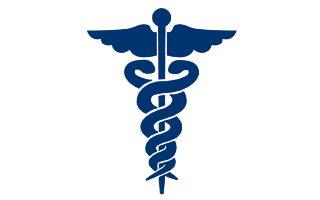 It’s winter season… Pediatric offices are busy with calls and visits with complaints of fever, cough, vomiting and diarrhea. I was on call just a few days ago, and the majority of the phone calls were with symptoms of the “stomach virus” or the “stomach flu.” The most likely culprit this winter is the NOROVIRUS.
It’s winter season… Pediatric offices are busy with calls and visits with complaints of fever, cough, vomiting and diarrhea. I was on call just a few days ago, and the majority of the phone calls were with symptoms of the “stomach virus” or the “stomach flu.” The most likely culprit this winter is the NOROVIRUS.
What is Norovirus?
Norovirus is the most common cause of acute gastroenteritis (inflammation of the stomach or intestine) in the U.S. according to the CDC (Centers for Disease Control). Each year it causes about 21 million illnesses and contributes to about 70,000 hospitalizations and 800 deaths. Norovirus is also the most common cause of food borne disease outbreaks in the U.S. Most Norovirus outbreaks occur from November to April in the U.S.
What are the most common symptoms?
The onset of symptoms is usually abrupt. Symptoms include: diarrhea, generally produced 4 to 8 times over a 24-hour period, vomiting, abdominal pain and nausea. The stools are typically non-bloody and non-mucous appearing. Fever can also be present in approximately half of the patients with this virus. Others may present with headache and body aches.
The incubation period is 24 to 48 hours and most get better within 1 to 3 days. For very young children, there is a danger of dehydration and can present as decreased urination, few or no tears, dry mouth and they may become unusually sleepy or fussy. Remember, norovirus should not be confused with the flu which is a respiratory illness caused by the influenza virus.
How is the virus transmitted?
It is a highly contagious virus. Anyone can get infected and get reinfected many times. There are many different types of Norovirus and being infected with one type may not protect you from other strains. One can become infected via fecal–oral route, water and food contamination, notably leafy greens (such as lettuce), fresh fruits, and shellfish such as oysters. Others include touching contaminated surfaces and having contact with someone who is infected with the virus. It can spread quickly in closed spaces like residential homes, daycare, cruise ships, schools and athletic centers.
How do we prevent Norovirus?
Norovirus can be found in the stool 12 to 60 hours before you start feeling sick. It can stay in your stool for two weeks or more after you feel better. Therefore, practice proper hygiene especially after changing diapers, handling food and using the toilet. Any food served raw or handled after being cooked can get contaminated. The virus is relatively resistant and can survive a temperature as high as 140 degrees F. People who are sick should not prepare food and not provide healthcare until at least 2 to 3 days after recovery. This also applies to schools and daycare centers.
Alcohol sanitizers can be used but should not replace or substitute for washing with soap and water. Clean and disinfect contaminated surfaces using a chlorine bleach solution with a concentration of 1000-5000ppm (5-25 tablespoons of household bleach (5.25%) per gallon of water) or other disinfectant registered as effective against norovirus by the EPA (Environmental Protection Agency). Use gloves and try not to agitate soiled items when handling. Machine wash at the maximum available cycle length and machine dry.
What is the treatment?
It is a viral infection, so antibiotics have no use in treating norovirus. Drink plenty of fluids. Over-the-counter oral rehydrating fluids are most helpful for mild dehydration. Sports drinks and other non-caffeinated drinks may not replace essential minerals and nutrients. For children and adults who have severe dehydration, hospitalization is required for intravenous fluid replacement. Due to the transient nature of the illness, specific viral diagnosis is not required unless there is an outbreak.
Norovirus can cause illnesses at anytime during the year, but it is most common in the winter. To date, there is 50% more norovirus illness this year because there is a new strain of the virus going around.
[blockquote class=blue]The author practices Pediatric and Adolescent Medicine at Pediatrics of Sleepy Hollow, LLP. 150 White Plains Road, Suite 101, Tarrytown, NY 10591. Telephone 914-332-4141.[/blockquote]






